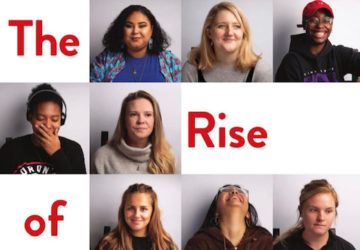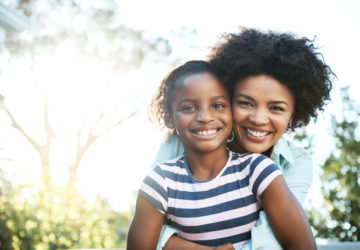
First seen in Red Tricycle, August 5, 2020 
It’s been months now since her social media feeds have been flooded with horrific images, posts, and stories about racism. In the midst of a global pandemic, we are witnessing senseless police brutality against black people, protests, marches, and social unrest. In my perhaps naïve attempt to promote social awareness, my conversations with girls, honestly, were disappointing. As I passionately talked about black lives mattering, systemic racism, and white privilege, specifically the murder of George Floyd and Amy Cooper who called the police on a black man and nearly got him killed, girls seemed clueless, apathetic, and disinterested. Some even told me they just didn’t understand why we needed to talk about race much. They need to know that for many not talking about it is not an option because it’s a daily lived experience. We need to teach them how to care.
At this point, I am not sure that parents want to talk about racism either. It can be uncomfortable and difficult. I know their instincts may be guiding them to protect her and to tell her to get off her screen. Yet, now, more then ever, we need to talk to our girls about racism as a social construct and a collective responsibility. At the same time, we need to motivate them to take steps to be part of creating change. They could become the next difference makers.
Navigating race is complicated. Talking about racism can depend on socio economic class, educational background, family make up, community, and life experiences. There’s no “one way” or “right way” to talk about race, but all parents need to know this: girls need to start having these conversations in order to become more aware of their thoughts and biases, their privilege, and their own actions (or inactions). If you are ready to begin, here is what you can do to empower her to become an intelligent and racially aware young woman, an ally for the oppressed, and an advocate for social justice.
First, set the example: check yourself and your own beliefs, biases, and prejudices. We all have them. I know it’s a big ask – to look at yourself in the mirror – but it is required. Take honest inventory of what you think about different races, how you treat people, and, yes, even the stereotypes you may hold as well as any racial slurs in your vernacular. In short, be aware of your racial tendencies. It is imperative that you check yourself and apologize when you misspeak or misstep. She needs to see that you are being real with her and she needs to see that you are holding yourself accountable if you do offend someone with the ability to say, “I’m sorry.”
Second, talk about it, not once, but daily. Girls hear about race all the time because they already see differences. They learn early to sort people into categories – boy or girl, tall or small, and, yes, black or white – there is no such thing as being “colour blind”. With this natural categorization, we can talk about diversity and, by extension, inequality – the fact that not all people are treated fairly. In fact, many cultures are mistreated because of the color of their skin. Saying you are colorblind and don’t see variations in color falls into the very notion that what we don’t talk about doesn’t exist. Differences exist and often lead to mistreatment and abuse of power. Let’s talk about how various ethnicities have diversified experiences. Let’s talk about why. Let’s encourage her to intentionally seek out diversity in her own social circles and celebrate races, to better understand different stories and perspectives – this can bring her closer to getting to the similarities – that all humans want and deserve love and respect.
Third, learn with her. She is going to need to better understand racism so I can’t repeat this enough: it is not the job of the marginalized, to teach her about their history. The responsibility needs to begin with her. Together, learn history. Why? When girls become grounded in facts about the past whether it’s slavery and black people, the Indigenous people, or the Chinese Canadians working on the railway, and the history of white people, they can start to understand others and answer some of their “why” questions so they become more confident when they speak. Girls cannot rely on what others tell them as this so often reinforces stereotypes and they cannot look to inaccurate social media platforms. Give her the knowledge she needs and learn together and hold space for her to ask her questions and formulate her own opinions and learn about race and reckoning. Teach her to be respectfully curious, to listen to someone else’s story without comparing it to her story.
Fourth, teach her to speak up and stand up. With knowledge comes passion and girls can easily become impassioned to do something when it comes to social justice. Help girls to notice situations and see truth so that they can speak up and stand up for the racialized who are often silenced. For example, when she is at a restaurant and orders food yet notices her biracial friend is overlooked by the server, she needs to say something and act quickly – as in, leave the restaurant. When her black friend is followed in the mall by a security guard who is suspicious she will steal, she needs to tell her friend they are done shopping for the day. It is never okay to ignore these kinds of truths, to “pretend” they are not happening, or to stay silent. Girls need to notice and then act when they witness injustices.
Now, more than ever, is the time for girls to know they can embrace the words of Mahatmi Gandhi: “Be the change you wish to see in the world.” This begins with the ability to care. Let’s remind girls to continue to care and take action when it comes to race, even when the news stories fade.
Lindsay Sealey, MA Ed. is an educator, speaker, consultant, and author of Growing Strong Girls: Practical Tools to Cultivate Connection in the Preteen Years and Rooted, Resilient, and Ready now available on Amazon and Audible. She is the founder and CEO of Bold New Girls and Brave New Boys.





